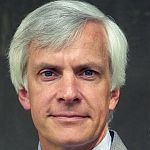 (HOST) Commentator and Vermont Humanities Council executive director Peter Gilbert tells us about a major archaeological event that happened a hundred years ago this Sunday, and the remarkable man at its center.
(HOST) Commentator and Vermont Humanities Council executive director Peter Gilbert tells us about a major archaeological event that happened a hundred years ago this Sunday, and the remarkable man at its center.
(GILBERT) On July 24, 1911 , a hundred years ago this Sunday , several local Peruvian farmers led 35 year old Hiram Bingham III up a steep slope to show him ancient ruins on the top of the rocky ridge. After a strenuous scramble fifteen hundred feet above the rushing Urubamba River, Bingham was struck speechless by the magnificent stone walls and terraces of Machu Picchu. Later scholarship would reveal that it had been a mountaintop retreat for Inca royalty – abandoned for four hundred years.
When I was climbing in the Peruvian Andes years ago, I visited Machu Picchu; it’s one of the most stunning places I’ve ever seen. And no wonder: it’s not only a UNESCO World Heritage site but it was also voted one of the seven modern Wonders of the World. Its impressive stone ruins, made of large precision-cut stones that fit together perfectly, like the finest jigsaw puzzle, are perched on a ridge amidst rugged mountains covered with thick vegetation. And next to the ruins – a pinnacle that looks like the Rock of Gibraltar. The scene is as photogenic today as it was a hundred years ago when Bingham first saw it and brought away both black-and-white photos for National Geographic and Inca artifacts for Yale’s museum. The photos of him show him dressed as we imagine an explorer-archaeologist in the early twentieth century should dress, complete with fedora. Some speculate that Bingham was part of the inspiration for the movie character Indiana Jones.
In any case, he certainly led a remarkable life. He wasn’t even a trained archaeologist; the man generally credited with bringing Machu Picchu to the world’s attention was at the time just a lecturer on South American history at Yale.
Bingham’s father and grandfather were both missionaries; indeed his grandfather was one of the first missionaries in what’s now Hawaii, having arrived there in 1820. Hiram Bingham III was born in Honolulu, and he went to what is now Punahou, the school that President Obama attended. From there, he went on to Phillips Academy in Andover, Massachusetts, the school that both President Bushes attended (and where his grandfather had gone to Seminary). Then he headed, as the Bushes did, to Yale. He broke the family tradition and did not become a missionary. Instead he married an heiress, a granddaughter of Charles Tiffany, and became an academic, earning his Ph.D. at Harvard. He made a total of five archaeological expeditions to Peru.
Wealthy and famous, he was elected Lieutenant Governor of Connecticut, and, in November 1924 , he was elected Governor. But the very next month he was elected to the U.S. Senate to fill a vacancy created by the death of a Senator. That made him simultaneously Governor-elect and Senator-elect. He served as Governor for one day, and then became Senator. A Republican, he was re-elected to the Senate in 1926 but was defeated in the Democratic-FDR landslide of 1932.